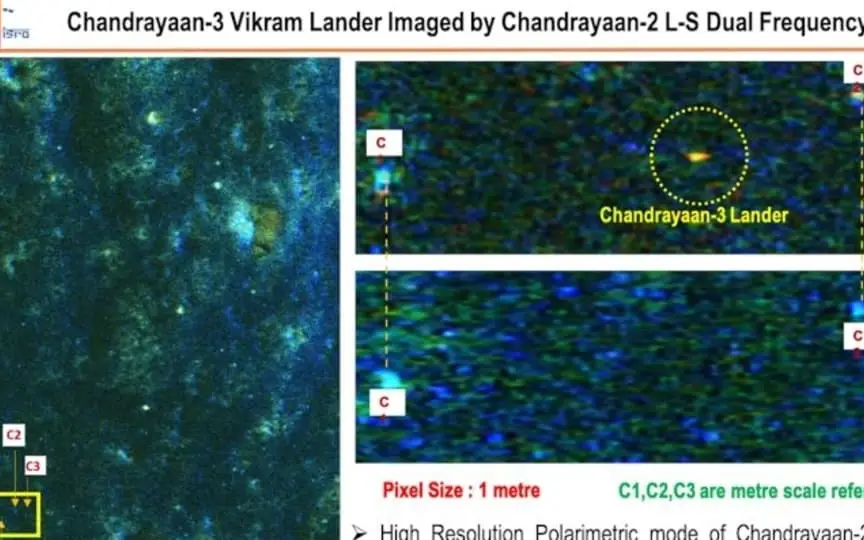ISRO’s Chandrayaan-3 Moon Mission Reaches New Heights – Find Out What’s Going On Up There
Chandrayaan-3, the propulsion spacecraft, is currently in orbit around the Moon, continuing India’s exploration of the lunar surface. Launched by the Indian Space Research Organisation (ISRO) on August 23, the mission’s primary objective is to successfully land the Vikram Lander and Pragyan Rover on the Moon’s surface. This achievement has only been accomplished by three countries thus far. Chandrayaan-3 follows the Chandrayaan-2 mission, which unfortunately failed to achieve a soft landing on the Moon in September 2019. Nevertheless, the spacecraft remains in lunar orbit.
Chandrayaan-3: Amazing pictures from space
New exciting images of Chandrayaan-3 have been shared recently. ISRO posted these images on social media platform X (formerly Twitter) on Saturday, September 9. However, currently the Chandrayaan-3 lander is not active. This is because the part of the Moon where the mission landed will be in darkness for two weeks, which means that all equipment that depends on sunlight will be dormant.
When the Sun’s rays return, the Chandrayaan-3 lander and its small rover Pragyan may wake up from their nap. According to ISRO officials, the two have already achieved most of their main objectives. Pragyan, a rover, successfully taxied out of its lander Vikram and even took pictures of the Moon’s surroundings.
This is not the first time that an Indian lunar flight has been captured from space. NASA’s Lunar Reconnaissance Orbiter, a spacecraft that takes high-definition images as it orbits the moon, also spotted Chandrayaan-3 earlier this month.
The Chandrayaan-3 propulsion module used to carry the Vikram lander and the Pragyan rover has not been retired after its mission. It is in orbit around the Moon and is exploring new goals, such as the search for extraterrestrial life with the SHAPE instrument. While in orbit, the Moon studies the Earth’s atmosphere and collects information about the polarization of light from our planet’s clouds. This information may identify habitable planets for future transit or signs of alien life. It also facilitates data transfer between the lander, the rover and the ground. Unlike its predecessor, this module has only one science instrument to learn from Chandrayaan-2’s mistakes.
The future of lunar exploration
India is now the fourth country to ever land on the moon, joining the ranks of the Soviet Union, the United States and China. And there may be more lunar missions on the horizon. The US space agency NASA has funded several robotic missions as part of the Artemis program. Some of these missions could land on the Moon as early as 2023. The goal of the Artemis program is to have a permanent human presence on the Moon and its surroundings by the end of the 2020s. The first human surface mission in the series, Artemis 3, is scheduled to launch in late 2025 or 2026.
Many countries, including India, are interested in exploring the South Pole of the Moon to learn more about the ice deposits there. NASA plans to establish one or more bases in this area, using lunar ice to support astronauts and equipment.




